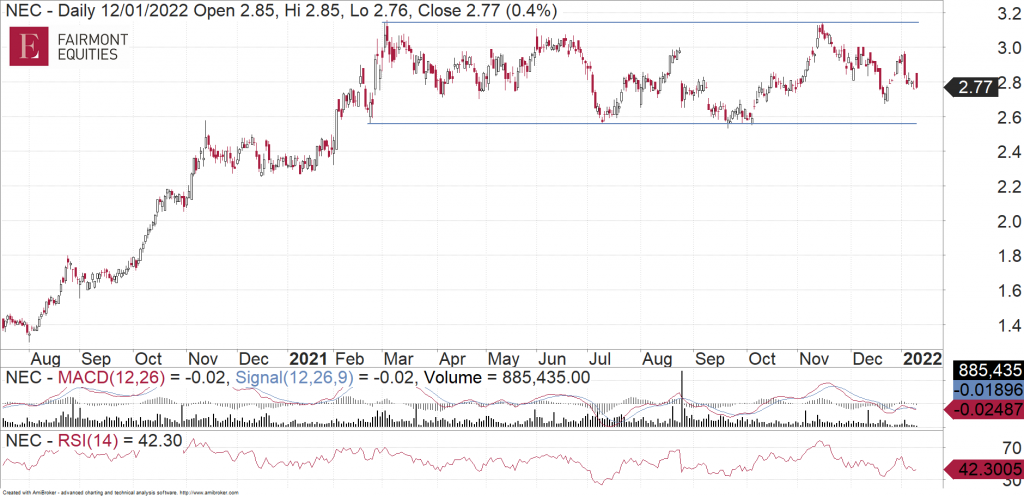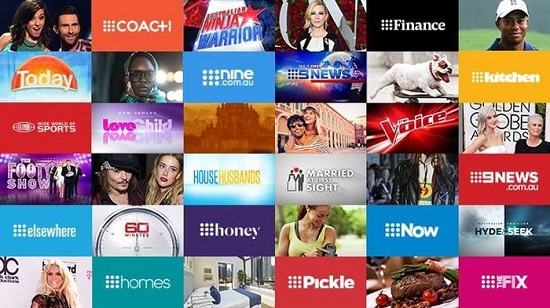We recently researched Nine Entertainment (ASX:NEC) after the Company released a trading update for the 1st quarter of financial year 2022 (1Q22).
Media stocks are generally well leveraged to a domestic economic & business recovery once COVID-19 challenges and restrictions ease. However, Nine Entertainment shares have struggled to gain any real ground over the last year. Accordingly, we assess the extent to which both macro and Company-specific factors can provide future upside in the shares.
About Nine Entertainment
The principal activities of NEC include:
i. Broadcasting and program production across Free to Air television (Nine Network), Broadcast Video on Demand (9Now) and metropolitan radio networks (Nine Radio) in Australia.
ii. Publishing across digital platforms and newspapers.
iii. Real estate media and technology services (59% ownership of Domain).
iv. Subscription video on demand.
Nine’s Digital and Publishing division includes Metro Media, as well as Nine’s other Digital Publishing titles. These include Pedestrian Group, Drive (formerly “CarAdvice”), and nine.com.au
Key Fundamental Drivers
Well Positioned to Offset Structural Decline in Free-To-Air Television
NEC reported a market share in Free-to-Air Television advertising of 40.3% as at FY21, which declined from 41.2% in FY20. While NEC’s market share is expected to normalise in FY22 (as the decline in FY21 was said to be due to timing associated with the Australian Tennis Open), the FTA market is expected to resume its structural decline from FY23 onwards. The metropolitan FTA advertising market has been under pressure for the best part of a decade. In FY11, metropolitan FTA advertising spend was $3.1b and had declined to $2.70b pre-COVID-19 (FY19) and $2.60b in FY21.
Broadcaster Video on Demand (BVOD) refers to content created by conventional broadcast media that is subsequently made available online and on-demand. The Australian BVOD market is current valued at ~$280m and is forecast to grow significantly in the future with PwC projecting total BVOD market revenues to reach $900m by 2025.
The significance of the BVOD offering is that it has the potential to offset the structural decline in the metropolitan FTA advertising market. This would be more beneficial for NEC should advertising agencies adopt BVOD faster. The main players in the domestic BVOD market include 7plus, 9Now, 10Play and Foxtel Go/Now. According to figures for the 2021 calendar, 7plus has the largest commercial FTA BVOD share, at 46% for both on-demand and live streaming in the 25- 54 demographic. 9Now trails slightly at 40% with 10play in third place, at 14%.
Following a period of outperformance from ASX-listed competitor Seven West Media (ASX:SWM) from 2011 to 2018, NEC has been consecutively ranked #1 in media agency bookings from 2019 and has attracted a higher rate of bookings than SWM over this period. Over the FY22 period to date, NEC has again gained greater share of media agency bookings.
Over the 2021 calendar year, NEC has led in traffic in all months aside from July and August. During July, 7plus had ~5x the total traffic of June due to the Olympics and Paralympics. In October, 9Now received twice the number of visits as 7plus and 10play.
Cost Growth Likely to Resume
At the time of the release of FY21 results in August, NEC guided to FTA costs rising by 3.5% in FY22, with the key contributing factors being cost returns, continued underlying investment in content and increasing staff costs.
At the 1Q22 trading update, NEC indicated that FTA costs are expected to grow slightly below 3% and that FTA market revenues are expected to grow at least 6%. So, on face value, this indicates that operating leverage is evident for FY22 at least. Having said that, i) Further re-investment of digital platform costs, as well as ii) Inflation with regards to acquiring & renewing sports broadcast rights (which is important from the viewpoint of NEC expanding its Stan Sport offering) present upward risk to the cost growth profile.
Opportunity For Stan In SVOD Market
The Subscriber Video on Demand (SVOD) market in Australia has been growing aggressively over time. In 2021, total SVOD penetration has reached 70% in comparison to 6% in 2012. According to Foxtel, the rate of penetration is expected to reach 85% in 2025 and the number of SVOD subscribing households in Australia is expected to grow from 7.7m at present to 9.1m in 2025.
There is also a trend towards multiple SVOD subscriptions per household, driven by increased new content partnerships as well as an easy process that allows easy subscriptions to multiple services. In the near term, acquiring sporting broadcast rights will remain critical for SVOD players as it commands higher monthly rates. For example, the revenue generated by Sports SVOD was +54%, in comparison to +20% for non-sports SVOD, according to Telsyte.
Nationally, the main SVOD platforms include Netflix, Amazon Prime, Disney+, Stan and Kayo Sports. As at September 2021, Netflix held the leading market share, with 33%, followed by Amazon Prime and Disney Plus with both 15% share and Stan with 13%.
Stan is comprised of Stan Entertainment and Stan Sport. Stan Sport is currently a loss-making start-up as it is investing in content before it can grow subscribers. Stan Sport is expected to reach EBITDA breakeven by FY24, as subscriber momentum for Stan in FY21 moderated and is presently not covering content reinvestment and increasing entertainment costs from investment in Stan Originals.
Currently, ~15% of Stan subscribers are subscribed to Stan Sport, which is accounting for most of the subscriber growth in Stan. In particular, the number of new Stan subscribers in FY21 were due to mostly to Stan Sport.
Stan is now actively looking for global players for partnership opportunities to further grow its subscriptions. However, the outlook for subscriber growth is challenging, as competition in the SVOD space increases, particularly from content producers (i.e Paramount+).
Fundamental View
While the Company’s expectation for FTA market revenues to grow by at least 6% is a better-than-expected outcome, it is worth noting that the prospect for higher cost growth remains a key earnings risk over the medium term. Further, NEC’s performance appears to be trailing that of SWM’s, who noted that 1Q22 revenue bookings were +60% higher (on a year-on-year basis) and that 2Q22 bookings were tracking to mid-single digits % ahead of the prior corresponding period.
Potential catalysts for the shares include the return/increase of dividends, capital management, and/or Mergers & Acquisitions.
Charting View
NEC has formed a very clear trading range during the year. At the moment it is in the middle of that range. For an entry point, we ideally need to see it come back towards support near $2.60 and then bounce off that level. Otherwise, a clear break above resistance near $3.10 would be the next opportunity.

Michael Gable is managing director of Fairmont Equities.
Current share prices available here.
You can learn more about technical analysis in this article.
An 8-week FREE TRIAL to The Dynamic Investor can be found HERE.
Would you like us to call you when we have a great idea? Check out our services.
Disclaimer: The information in this article is general advice only. Read our full disclaimer HERE.
Like this article? Share it now on Facebook and Twitter!

